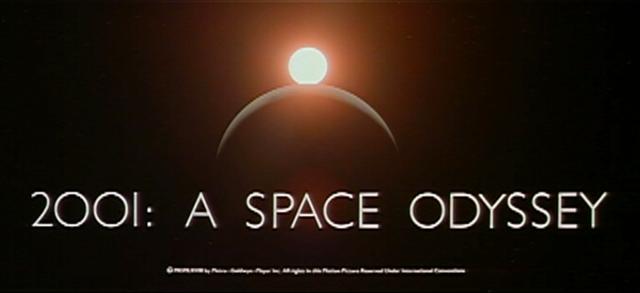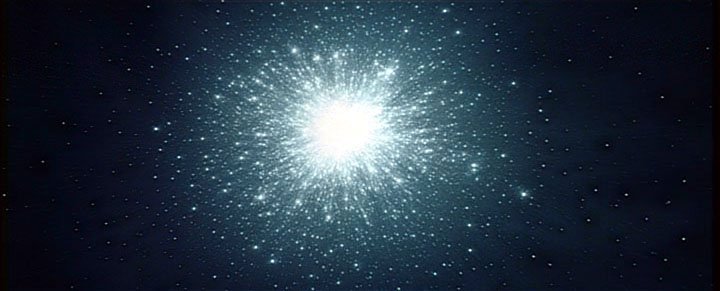
“Kubrick: and beyond the cinema frame”
An in-depth analysis of
2001: A SPACE ODYSSEY
Text copyright © by Rob Ager 2008
(last updates added 2015)
CHAPTER 4
ENLIGHTENMENT AND REBIRTH
Having identified the monolith as a cinema screen, one of the most drastic transformational effects upon the story is that of the expanding universe sequence. Kubrick was a demon for technical realism and considering the lengths he went to in depicting space age technology and the lunar surface, the so called “expanding universe” and “alien landscape” sequences are particularly unconvincing by comparison. The big bang sequence has some major scientific flaws. For starters, the bright explosion after the stargate is emitting stars, but scientists have known for a long time that the early universe was gaseous and consisted almost exclusively of hydrogen and helium.

Stars did not develop until at least millions of years later. We also see no galaxies at all in the later stages of this expanding universe sequence, even though our own milky way is seen behind the BBC news presenter when watched by Bowman and Poole. There are also shots that appear to be depicting nebulae’s forming into stars, but if they were shown in an entirely different story context we would probably not even think of them as footage of an expanding universe. One particular shot of a white ball leaving a trail is totally unrealistic.
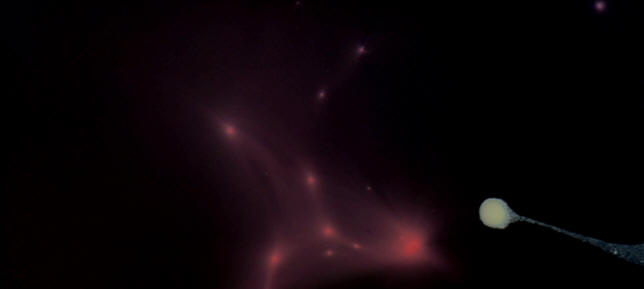
If this is intended to be an image of a star then it’s a very poor special effect. So why would Kubrick include such a strange selection of unconvincing shots for this sequence? One could argue a lack of efficient special effects technology at the time of production, but even with the methods he did use Kubrick could have done much better than this. The monolith / screen relationship is the perceptual key to understanding these anomalies. Once you crack the screen connection, the dazzling explosion that follows the stargate ceases to be a representation of the big bang and expanding universe. It is now a psychedelic metaphor for intellectual rebirth and enlightenment, which applies both to Dave Bowman and the film’s audience. This bizarre sequence of liquidous shots are a visual metaphor of expanding consciousness. The most obvious clue of a rebirth theme is the shot of a red gaseous formation that looks very much like a growing foetus in a womb. This also bears similarity to the films final shot of an illuminated baby.
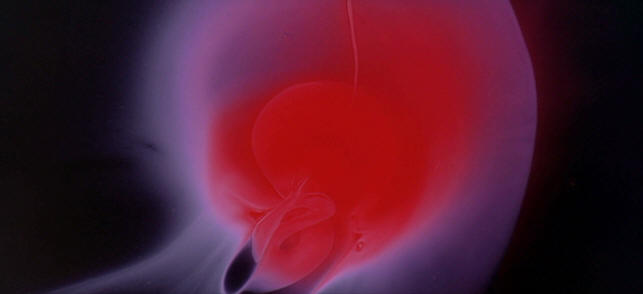
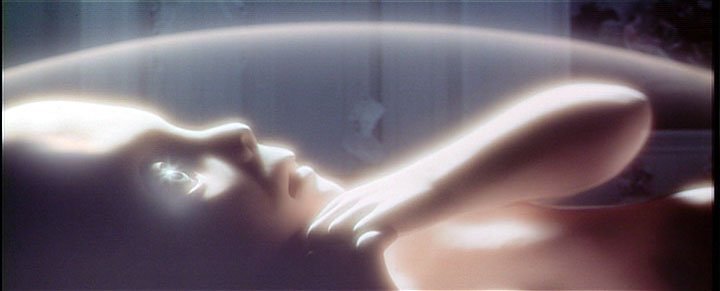
A slightly less obvious example of organic rebirth and growth is the small red and yellow explosion that creates two bubble formations. If you look closely on the dvd you will notice that a faint white light is flashing over the shot at roughly one second intervals. This does not occur in any of the other expanding universe shots and there is no reason why an exploding universe would feature a pulsing white light. Most likely this shot represents a beating human heart.
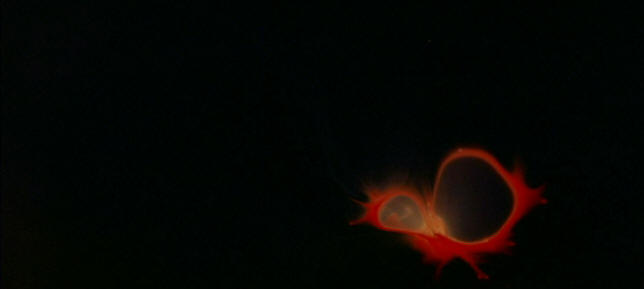
The whole big bang sequence is an organic opposite to the cold and clinical images of technology. Many reviewers have also interpreted the films space ship designs as being mechanical representations of organic reproduction, such as the sperm-like discovery ship and various egg shaped crafts. This could explain the aforementioned shot of a white ball leaving a trail – perhaps a hint of the discovery ship being a metaphoric sperm on its journey through the womb. This organic interpretation also ties in nicely with the unexplained scale of the monolith floating near Jupiter. Are we seeing the vast scale of Jupiter and its moons or is this a representation of organic impregnation on a scale too small for the naked eye?
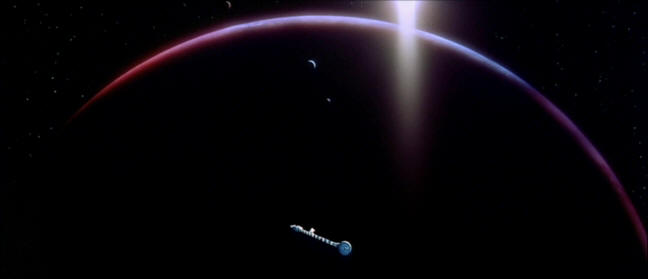
Hints of a rebirth theme are also frequent elsewhere in the story. Heywood Floyd wishes his daughter happy birthday and Frank is wished happy birthday by his parents. HAL regresses back to the moment of his own birth as he is being shut down and Bowman is obviously reborn as an enlightened or illuminated baby after spending some time in a strange room of renaissance décor. And the word renaissance literally translates as “rebirth”. Another possible reference to rebirth is the hostesses during Floyd’s space flights. Their white uniforms feature round hats similar to baby’s heads and their zero-gravity walking even has a crawling baby-like quality.
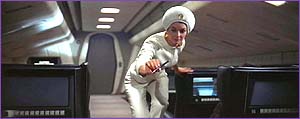
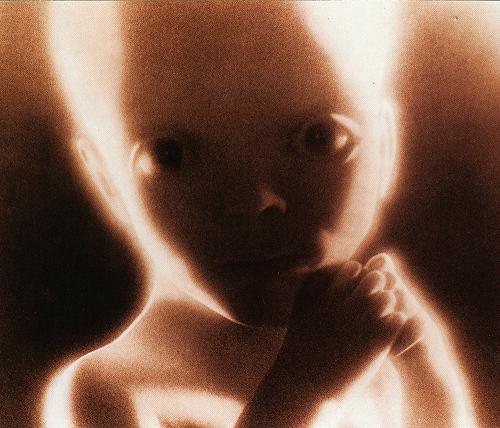
The counterpart of spiritual rebirth is of course symbolic death, which is also prominent in the story. The ape discovering how to use a bone as a weapon occurs as it stands over a skeleton. We also have the deaths of Frank Poole and HAL as well as Bowman’s rapid aging before his rebirth as the starchild. Even the black and white robes worn by Bowman as he ages could be representing death and rebirth.
As an additional aspect of enlightenment or self-awareness, Bowman repeatedly see himself in the third person before he is reborn. Some psychologists have theorized that this is a key trait that separates humans from other living species on Earth.So it would seem that one of the core themes of this film is rebirth and enlightenment. Notice that the illuminated baby in the final shot slowly turns to look directly at us. If the reborn Bowman understands the meaning of the monolith, just as we do, then perhaps he is now watching us from the other side of the screen.

This effectively makes the cinema screen a mirror image of mutual enlightenment. And, like the apes teaching their young how to use bones as weapons, the enlightened Bowman can now spread his newfound enlightenment to the population of Earth.
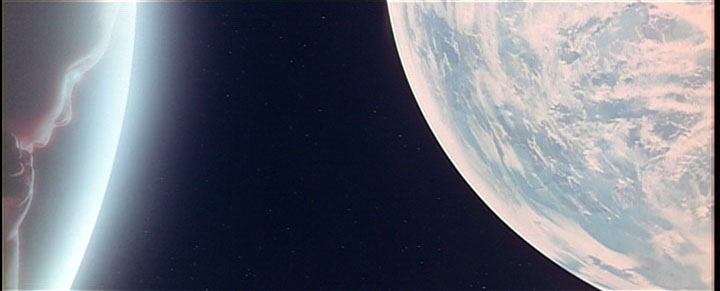
These concepts of symbolic death, rebirth and enlightenment are not sci-fi concepts, but have been depicted across cultures and religions throughout history. Yet from the content of Kubrick’s movies and from his rare interviews he does not present as a man who believes in God or the afterlife. He presents as either agnostic or atheist. So the rebirth themes of 2001 seem to be related purely to intellect and its application for survival. After the apes have their intellectual rebirth experience, they are seen outside the cave entrance at night - unafraid of the dark. Before they encountered the monolith they were shown hiding in the cave and fearing the night. Kubrick often used musical repetition to link scenes in his films and in 2001 the first and final shot feature the classical piece Thus Spake Zarathustra. In the first shot we see what is presumably the moon, the Earth and then finally a full view of the sun. In the final shot we see the moon then the Earth then the starchild. Being that the sun has been historically linked to enlightenment the “star” child obviously represents the sun, bringing enlightenment to his home planet.
